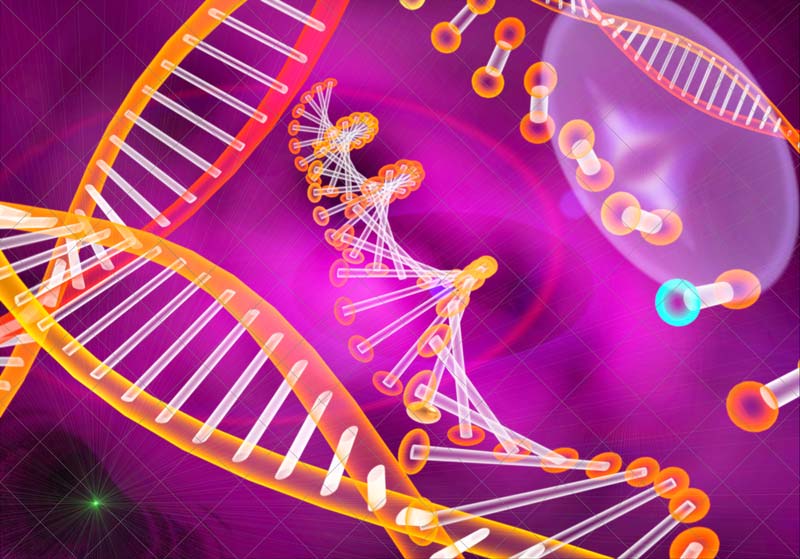Genetic Test Could Better Reveal Fetal Abnormalities

A new test may be better at detecting potentially harmful genetic changes in children before they are born than current methods, researchers say.
The test, called a chromosomal microarray, detected more irregularities that could result in genetic diseases — such as missing or repeated sections of genetic code — than did karyotyping, which is the current standard method of prenatal testing.
For instance, children who are missing a small portion of chromosome 22 will be born with DiGeorge syndrome, which can cause severe heart defects and developmental delays. In the study, a chromosomal microarray detected this missing section and diagnosed the condition, whereas a karyotype is not able to find the change.
Microarrays also identified some genetic changes linked to autism not revealed by karyotyping.
The findings suggest microarray should replace karyotyping as the standard method of finding genetic irregularities in fetuses, said study researcher Dr. Ronald Wapner, an obstetrician and gynecologist at Columbia University in New York. Microarrays are already used to diagnose genetic conditions in children with developmental disabilities and birth defects.
However, experts cautioned that microarrays could provide more information than is useful. Some abnormalities identified by the test are new, and have unknown or uncertain consequences, which can put stress on families. [See 11 Big Fat Pregnancy Myths.]
It is critical that parents who receive this type of testing are counseled before and after the test about what the findings could mean, experts say.
Sign up for the Live Science daily newsletter now
Get the world’s most fascinating discoveries delivered straight to your inbox.
Microarrays vs. karyotype
In karyotyping, fetal cells are analyzed under a microscope, which allows researchers to see whether too many or too few chromosomes are present, or if the chromosomes have an abnormal structure. In contrast, microarrays compare a sample of the fetus' DNA with that of a healthy person, giving researchers a closer look at the genetic code.
Both tests require fetal cells, which are obtained either by amniocentesis, a procedure that takes cells from the amniotic fluid, or chorionic villus sampling, which takes cells from the placenta. These procedures comes with risks, including a small risk of miscarriage.
In the study, Wapner and colleagues analyzed information from about 4,400 pregnant women who had prenatal testing because they were over 35, had an abnormal result on screening test for Down syndrome, or they had an ultrasound that indicated possible birth defects.
Microarray testing was just as good as karyotyping at detecting whether the fetus had too many or too few total chromosomes.
In addition, about 2.5 percent of samples with a normal karyotype had microarray results that revealed missing or repeated sections of genetic code that could result in a genetic disease.
For fetuses with possible birth defects, about 6 percent of samples with a normal karyotype had abnormalities on the microarray.
In a second study, also published today, microarrays more often provided results on genetic testing looking for the cause of a stillbirth — 87 percent microarray tests produced results compared with 70 percent with karyotype.
When to use microarrays
Dr. Manny Alvarez, an obstetrician and medical editor for FoxNews, said he agreed with the conclusion that microarrays should replace karyotyping. "I will certainly be adding microarrays" when conducting amniocentesis tests, Alvarez said.
Also, karyotyping requires live cells, and if cells fail to grow in a lab, the amniocentesis must be repeated, Alvarez said. Microarrays don't require live cells, and so they do not have this problem, he said.
Some doctors have held back on using microarrays for prenatal testing because it's not always clear how a genetic disease will manifest, said Dr. Monique Ho, an obstetrician and prenatal geneticist at the University of Rochester Medical Center, who was not involved in the study. One child with a particular genetic mutation may be disabled, while another with the same mutation may appear healthy.
But as databases of genetic abnormalities grow, and researchers study children for longer periods, understanding of what genetic findings mean will improve, Wapner said.
Ho said microarrays could replace karyotyping in some but not all cases. Doctors might want to use microarrays if time is a factor, because the test is faster than karyotyping.
However, microarrays cannot reliably detect a phenomenon known as mosaicism, in which a genetic abnormality is found in some cells, but not all of them, Ho said. Microarrays also cannot detect changes in which there is no loss or gain of DNA, which could affect the next generation of children, Ho said.
The new studies will be published tomorrow (Dec. 6) in the New England Journal of Medicine.
Pass it on: The standard method for prenatal testing, calledkaryotyping, may be mostly replaced by a new test called a chromosomal microarray.
Follow Rachael Rettner on Twitter @RachaelRettner, or MyHealthNewsDaily @MyHealth_MHND. We're also on Facebook & Google+.

Rachael is a Live Science contributor, and was a former channel editor and senior writer for Live Science between 2010 and 2022. She has a master's degree in journalism from New York University's Science, Health and Environmental Reporting Program. She also holds a B.S. in molecular biology and an M.S. in biology from the University of California, San Diego. Her work has appeared in Scienceline, The Washington Post and Scientific American.









